World News Daily(2024-07-05) : Solving the Ozone Hole: Science, Policy, and Global Action
Solving the Ozone Hole: Science, Policy, and Global Action

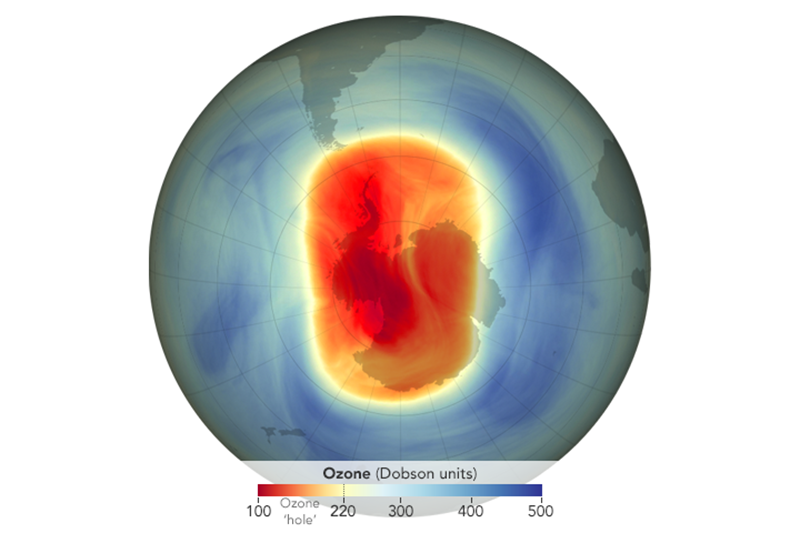
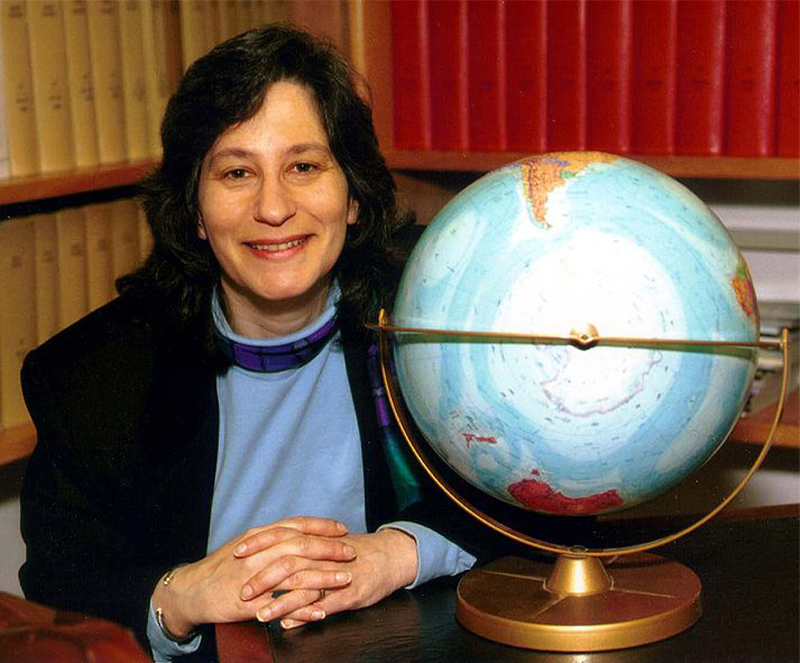

The ozone hole shocked the world in 1985. Scientists discovered a massive depletion over Antarctica, far worse than expected. The culprit? Chlorofluorocarbons (CFCs), chemicals used in aerosols and refrigerants. CFCs are persistent, traveling long distances without breaking down.
In 1986, a team led by Susan Solomon flew to Antarctica to gather data. They confirmed that CFCs were destroying ozone faster in the extreme cold. This discovery led to the Montreal Protocol, which banned CFCs globally. The ozone layer is now healing.
The story highlights the interplay between science, policy, and public awareness. It demonstrates how collective action can address environmental crises. The ozone hole remains a stark reminder of our impact on the planet.
ScoresPolitics
NATO Strengthens Security Ties with Indo-Pacific Allies

NATO plans to deepen ties with Australia, Japan, New Zealand, and South Korea, issuing a joint document next week. The objective is to counter threats from China and Russia.
Known as "IP4," these four nations are already NATO partners and will participate in cyber exercises to address cybersecurity and disinformation threats.
This move indicates NATO's strategic shift towards the Indo-Pacific, aiming to strengthen collective defense in a region increasingly characterized by geopolitical tension.
ScoresU.S. Doping Probe into Chinese Swimmers Raises Global Concerns

In 2021, 23 Chinese swimmers tested positive for doping but still competed and won medals at the Tokyo Olympics. The World Anti-Doping Agency (WADA) accepted China's explanation of food contamination, a decision that was kept confidential until recently.
Now, just weeks before the Paris Olympics, Brent Nowicki, the international swimming federation's top administrator, has been ordered to testify in a U.S. criminal investigation. This investigation is under a federal law that allows probes into doping conspiracies, even if they occurred outside the U.S.
This case raises questions about WADA's effectiveness and China's sports ethics, and it highlights the challenges of enforcing anti-doping rules globally. The ongoing investigation could impact how officials from other countries interact with the U.S. in the future.
ScoresUK Election: Labour Predicted to Win Big, Conservatives Face Defeat
Exit poll predicts Labour's thumping victory in UK election. Labour set to win 410 seats, Conservatives 131. Lib Dems 61, Reform 13, SNP 10, others 25. Labour leader Sir Keir Starmer poised to become next prime minister.
Rishi Sunak's early election call backfired. Tories face a brutal reckoning after 14 years in power. Senior Tories, including cabinet ministers, could lose seats. The Liberal Democrats are on track to become the third largest party. The SNP is punished for internal turmoil.
Labour's "time for change" message resonates. The exit poll suggests Reform UK squeezed the Conservative vote. A Labour majority could secure a decade in power. Tories brace for a crushing defeat. Sunak is expected to resign as party leader.
Labour's victory gives Sir Keir a huge mandate to change Britain. Potentially beyond a cautious manifesto. Nvidia set to sell $12bn worth of AI chips in China despite US export controls. Chips restricted due to military use fears. Nvidia is the latest Silicon Valley company entangled in US-China tensions.
ScoresEconomy
SpaceX's Polaris Dawn Mission: Pushing Private Space Exploration Boundaries
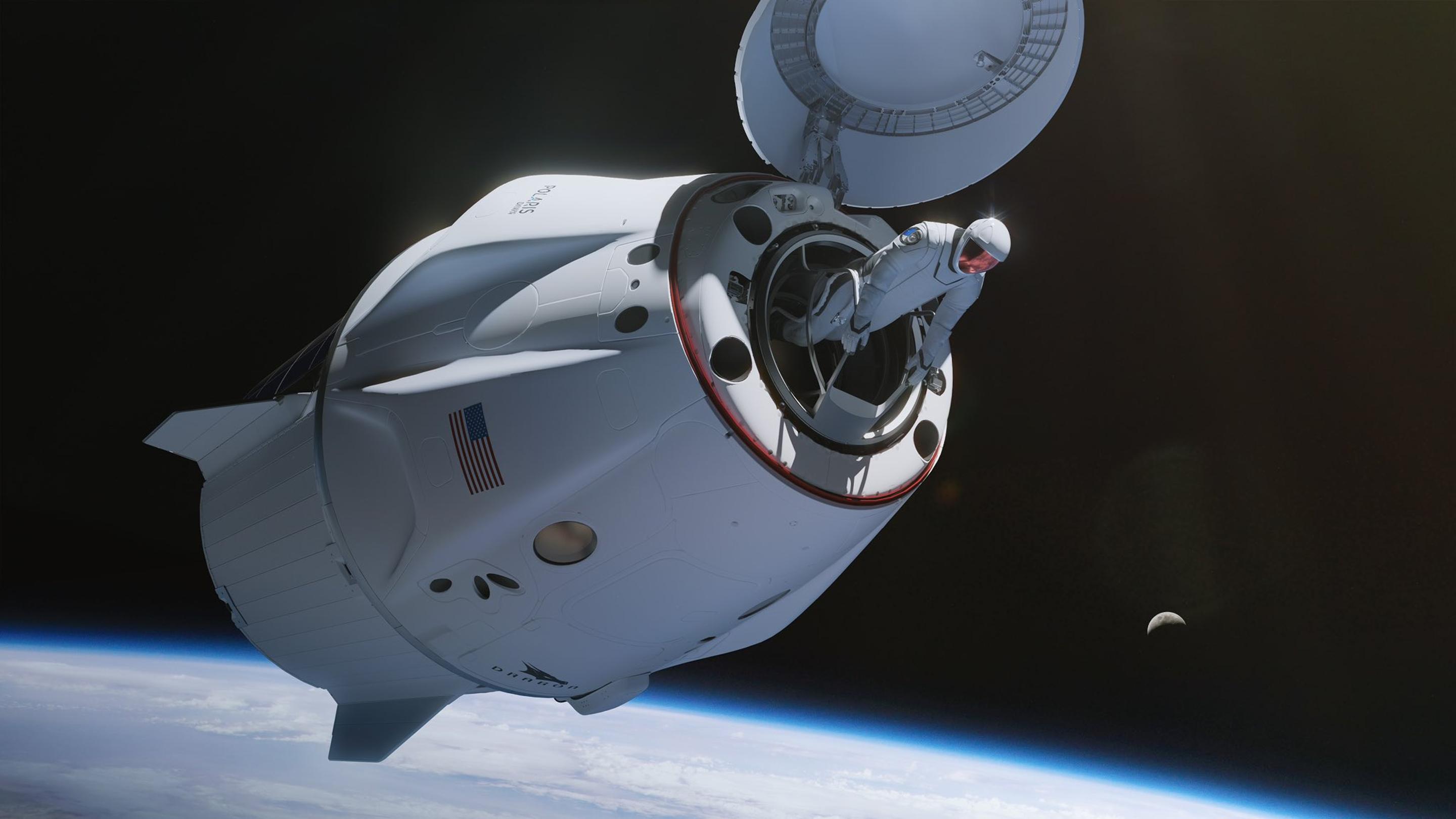
SpaceX's Polaris Dawn mission, set for launch no earlier than July 31, 2024, aims to push the boundaries of private space travel. The mission, featuring a Crew Dragon spacecraft, will carry four astronauts farther from Earth than any crewed mission in over 50 years.
This mission marks a significant leap in commercial space exploration, moving beyond mere cargo and crew transport to the ISS. The Polaris Dawn will attempt to reach an initial orbit of 870 miles, surpassing the heights achieved since the Apollo 17 lunar mission in 1972.
A notable risk at this altitude is exposure to the inner Van Allen belt's radiation. However, the crew, led by Jared Isaacman, will initially orbit at a safer, lower altitude of 120 miles, minimizing radiation exposure.
The mission includes 38 scientific experiments focused on the effects of space travel and radiation on human health. Post-experiments, the spacecraft will descend to 430 miles for the first private spacewalk, facilitated by a specially modified Dragon capsule and upgraded EVA suits.
This mission not only advances private space exploration but also underscores the growing role of non-governmental entities in space ventures.
ScoresTesla's Stock Surges on Strong Deliveries Report
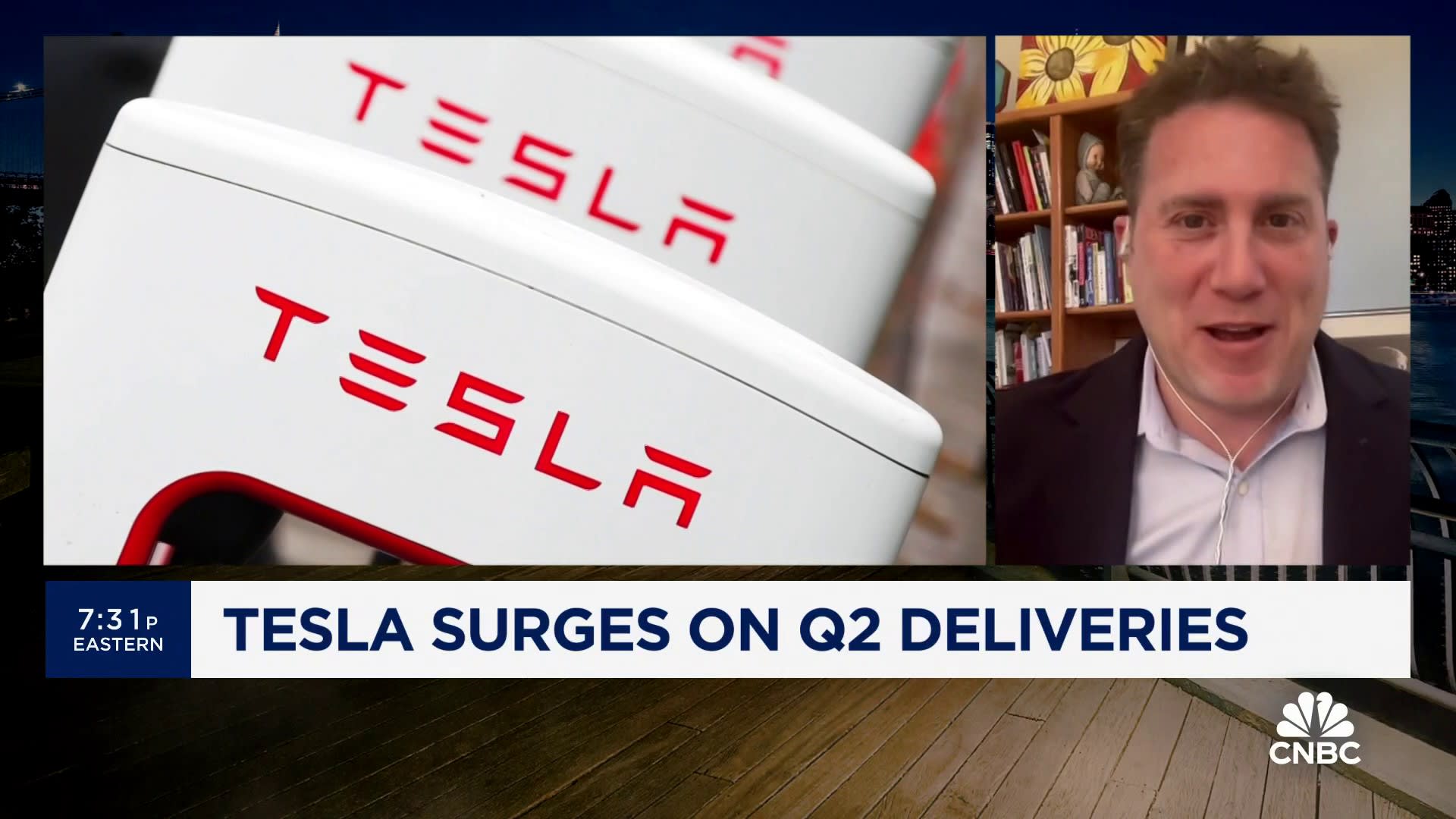
Tesla's stock surged, up 23% for the week. This follows a strong second-quarter report, beating analyst expectations with 443,956 vehicle deliveries. The stock rallied 70% from its April lows, nearly erasing 2024 losses.
Deliveries exceeded estimates, hitting 443,956 vehicles against a forecast of 439,000. Production reached 410,831 vehicles. Tesla's stock closed at $246.39, a 6.5% increase.
The focus now shifts to Tesla's Q2 auto gross margins and future product updates. Tesla also deployed 9.4 gigawatt hours of energy storage products, a record.
Tesla's performance suggests either a market share gain or a dramatic market expansion. The company plans to unveil its robotaxi design next month and will post second-quarter financial results on July 23.
ScoresApple's Antitrust Battle: A Global Perspective
The Shanghai court dismissed Jin's lawsuit against Apple for abusing its market dominance, leading Apple to appeal to the Supreme Court. This case marks the first of its kind in China's software market. Apple faces antitrust allegations in multiple countries, including the U.S. Department of Justice and EU regulatory bodies. Apple lost in the UK and faces nearly $10 billion in claims. Epic Games accuses Apple of violating a court injunction. Apple has conflicts with the EU over the Digital Markets Act. Both Apple and Epic have requested the U.S. court to reconsider the antitrust ruling. Apple is facing a class-action lawsuit due to Cook allegedly concealing iPhone demand in the Chinese market.
Antitrust laws aim to prevent the abuse of market dominance, protect competition, and safeguard consumer rights. Apple's challenges in multiple global regions highlight its market influence and regulatory pressures. Such cases have far-reaching implications, involving legal, economic, and technological domains.
ScoresQian Kai Port: Peru's New Logistics Hub and Opportunities for Sino-Peruvian Cooperation
Qiankai Port, located north of Lima, Peru, is an investment by Chinese enterprises. The construction of the port area is nearing completion, featuring four deep-water berths capable of accommodating large vessels. Designed to handle one million containers annually, with a long-term goal of 1.5 million.
The port is positioned as a hub, connecting to the Pan-American Highway, facilitating efficient cargo transportation. It enhances maritime efficiency and deepens trade with Asia. The project emphasizes green and low-carbon practices, with smart management, electric trucks, and autonomous driving.
The project employs approximately 3,000 local workers, with plans to support a workforce of 1,000 in future operations. It stimulates the logistics chain and significantly increases employment opportunities.
The China-Latin America Land-Sea Corridor shortens maritime transit times, benefiting small and medium-sized enterprises such as the "Warm Camel" brand by reducing transportation costs.
Qiankai Port is not just an engineering project but also a platform for cooperation. It fosters local employee growth, technical exchanges, and knowledge sharing. Peruvian students with Chinese language skills are eager to secure positions at the port.
As the project progresses, job opportunities are in high demand. The deepening friendship anticipates a journey to China. Qiankai Port represents a new opportunity for Peru, a development engine for the South American logistics value chain.
ScoresChina's Aging Population and Economic Challenges
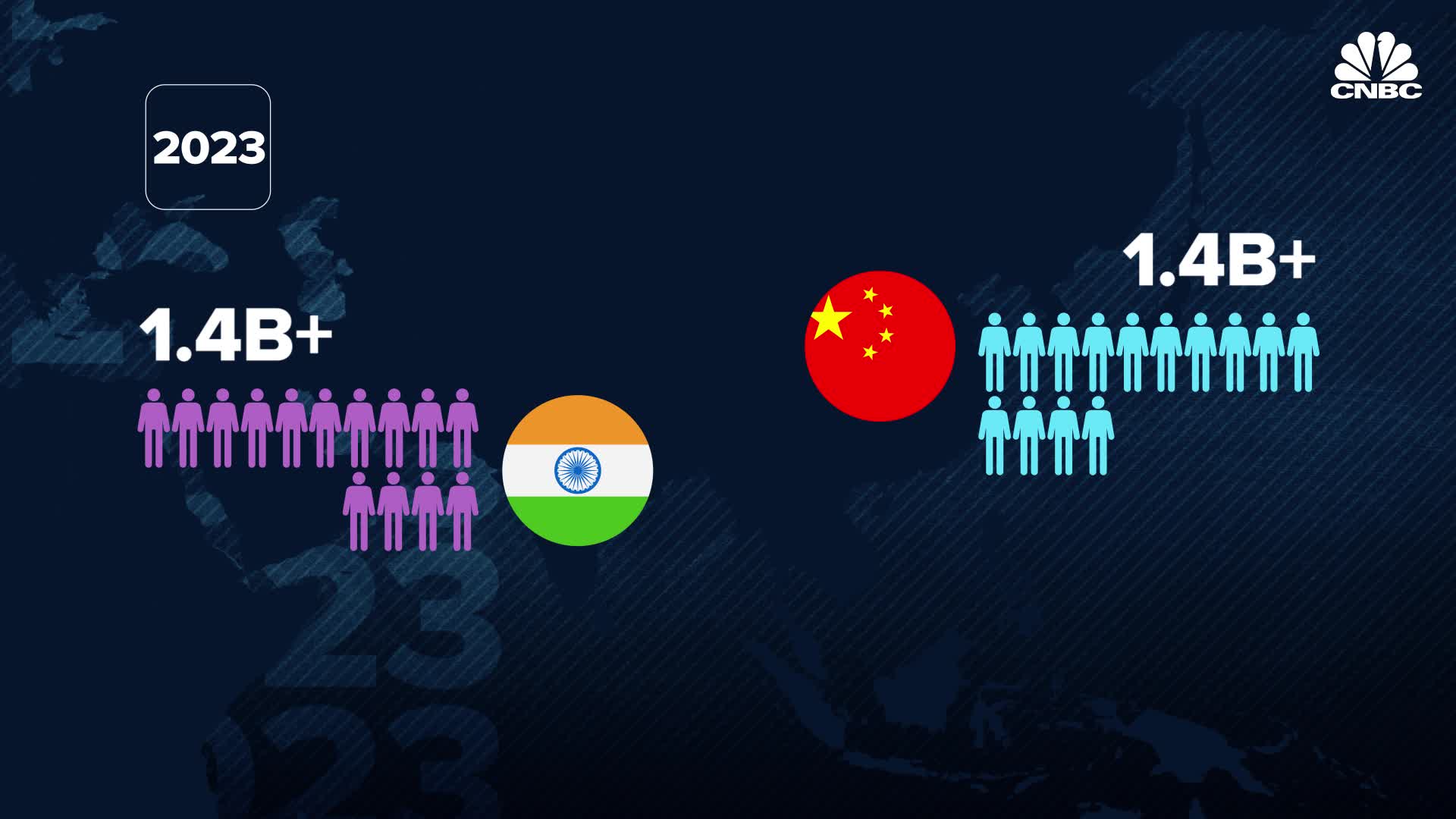
China's population is shrinking. This decline, driven by low birth rates and aging, threatens economic growth. The labor force will shrink, dragging GDP by 1% annually for a decade. Fiscal policies will strain to support an aging population.
Raising the retirement age could ease fiscal pressures, potentially cutting pension shortfalls by 20%. Yet, the root problem lies in falling fertility rates worldwide, especially in developed nations where economic growth and education opportunities for women have risen.
China's one-child policy, implemented in the 1980s, exacerbated this trend. The country's population is projected to drop to 1.317 billion by 2050 and halve by 2100. This rapid decline is faster than in Japan or South Korea, influenced by improved living standards and high living costs.
Economic development increases the cost of raising children, deterring births. In Asia, long work hours further limit family time. This demographic shift burdens younger generations with supporting both children and elderly parents, straining healthcare and pension systems.
China is focusing on productivity growth to offset declining labor contributions to GDP. The challenge requires comprehensive government efforts in fiscal and monetary policies.
ScoresTechnology
DisCo-Diff: Integrating Discrete Latents with Continuous Diffusion Models
Diffusion models, encoding data into Gaussian distributions, face complexity issues. DisCo-Diff introduces discrete latents to simplify this. It pairs continuous and discrete variables, trained end-to-end without pre-trained networks. This approach eases the learning curve and improves performance across various tasks, including image synthesis and molecular docking. DisCo-Diff sets new benchmarks, notably in FID scores for ImageNet datasets.
*FID: Fréchet Inception Distance, a metric measuring image quality in generative models.
ScoresSpace Exploration Highlights of the Year
NASA's Juno spacecraft flew close to Io, Jupiter's moon, capturing detailed images of its volcanic surface. Io's landscape features hundreds of active volcanoes, some detectable by their heat.
The Mars Odyssey orbiter photographed Olympus Mons, the largest volcano in our solar system, offering a panoramic view of its massive, shield-like structure.
Japan's Astroscale successfully approached a piece of space debris, demonstrating potential solutions for managing Earth's growing space junk problem.
In May, intense solar storms triggered spectacular auroras, visible even in regions where they are rare. NOAA satellites documented these light shows from above the North Pole.
Japan's SLIM spacecraft achieved a pinpoint landing on the moon but unfortunately landed upside down, preventing its solar panels from functioning.
ScoresUltra-Precise Atomic Clock Sets New Standards in Timekeeping
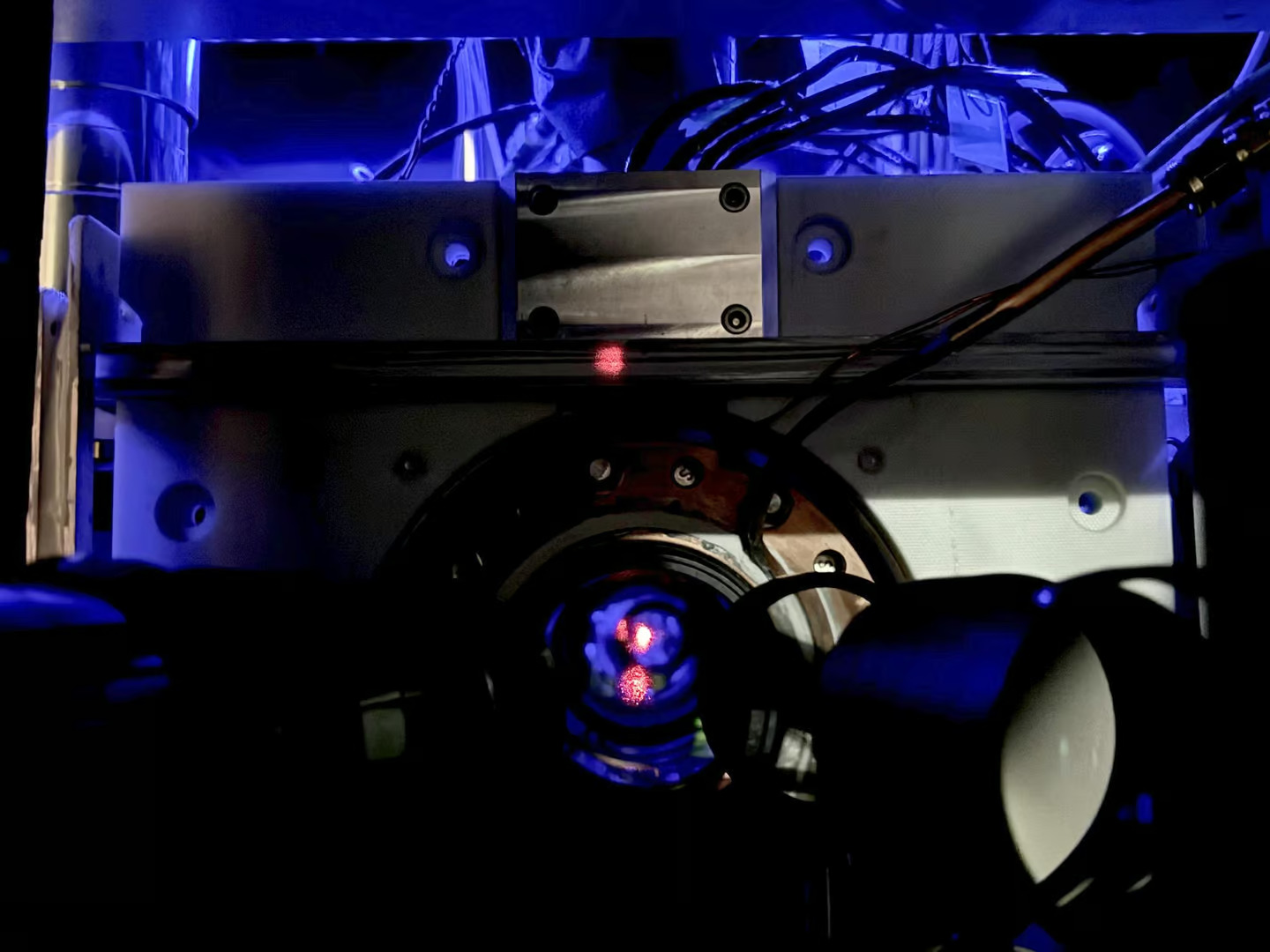
Scientists have constructed the world's most accurate clock. Its precision is such that it would only lose one second over 300 billion years—more than twice the age of the universe. This clock utilizes strontium atoms, which oscillate 429 trillion times per second, measured by visible light rather than microwaves.
The clock's accuracy is vital for technologies like GPS and communication. It also paves the way for new discoveries in physics, aiding in the measurement of how gravity influences time at minute scales. This breakthrough could reveal subtle effects predicted by theories such as Einstein's general relativity.
The clock operates by confining thousands of strontium atoms within a laser grid, or "optical lattice." This configuration minimizes errors arising from laser fluctuations and atomic collisions. The outcome is a precision of a trillionth of a second over 300 billion years.
This advancement in timekeeping not only enhances our daily technologies but also broadens our comprehension of the universe's fundamental laws.
ScoresCloudflare Introduces Tool to Block AI Web Scrapers
Cloudflare has introduced a new tool to block AI web scrapers, utilizing AI to detect bots attempting to scrape content for training large language models (LLMs). This tool assigns a score to each website visit, with lower scores indicating a higher likelihood of the visitor being a bot. Cloudflare plans to regularly update the tool to counteract new bot tactics and also offers a reporting feature for website operators to flag new bots.
Web scraping involves the automatic collection of data from websites, while LLMs are advanced AI models designed to understand and generate human-like text.
ScoresNew DNA Editing Tool Offers Enhanced Genetic Engineering Capabilities

Scientists at Arc Institute have developed a new DNA editing tool known as the bridge-recombinase mechanism. This system employs a specialized RNA to precisely target and modify DNA sequences, offering greater flexibility than CRISPR, another gene-editing technology.
The cornerstone of this new system is the bridge-RNA, which can be programmed to identify specific DNA sequences and facilitate the insertion or removal of genetic material. This capability allows for the high-accuracy correction of faulty genes or the addition of new ones.
Led by Patrick Hsu at UC Berkeley, this research unveils new horizons for genetic engineering, potentially leading to enhanced treatments for genetic diseases and more efficient genetic modifications in organisms.
The bridge-recombinase mechanism represents a significant advancement in biotechnology, providing a robust new method for DNA manipulation and potentially transforming our approach to genetic modifications.
ScoresVideo Game
The Chinese PC Gaming Market Sees Significant Growth

Niko Partners' report reveals a surge in Chinese PC gamers' spending. Nearly two-thirds prioritize PC over other platforms. Steam dominates as the top PC gaming platform, with 80% of players using it. Mobile gaming, particularly mini-games, sees significant growth, reaching 6.5 billion players. The trend indicates a robust market, especially in PC gaming.
ScoresEntertainment
Noplace: A New Social App Mixes Twitter and MySpace
Noplace, a new social app, has reached the top spot on the App Store. It combines elements of Twitter and MySpace, aiming to restore the social aspect of social media. Users can personalize their profiles with colors and details such as hobbies and fandoms. The app emphasizes text updates rather than photos or videos.
Tiffany Zhong, the founder, identified a gap in current social media platforms. She notes, "Everything is just media. It feels very disconnected." Noplace attempts to address this by allowing users to follow friends and connect with like-minded individuals in one centralized location.
The app utilizes AI for suggestions and summaries, rather than traditional algorithms. It provides two feeds: one for friends and one global. Profiles are public, and there is a moderation team in place to ensure safety.
Zhong launched Noplace last year with a small team. It gained popularity during its beta phase, attracting early adopters such as K-pop fans. The app competes with Twitter, now known as X, offering a similar text-based feed with enhanced social features.
Noplace is available for free on iOS and web, with monetization plans yet to be announced. It has received backing from investors including 776 and Forerunner Ventures, raising over $19 million to date.
ScoresHealth
Genetic Re-engineering of Tumors to Overcome Drug Resistance
Scientists are reengineering cancerous tumors to self-destruct. This method targets drug-resistant cells, a major hurdle in cancer treatment.
The approach involves modifying the tumor's genetic makeup. By doing so, the tumor becomes its own destroyer. This genetic alteration triggers a self-destruct sequence within the cancer cells.
Drug resistance in cancer cells often renders traditional treatments ineffective. This new method aims to overcome this by directly attacking these resistant cells.
The implications are significant. If successful, this could lead to more effective cancer therapies. It could also reduce the reliance on chemotherapy and its harsh side effects.
This research is still in its early stages. However, the potential benefits are promising. It offers a new direction in the fight against cancer.
ScoresRacial Disparities in Severe Maternal Morbidity Linked to Preexisting Health Conditions
Researchers have uncovered significant racial disparities in severe maternal morbidity, primarily linked to preexisting health conditions. Severe maternal morbidity refers to serious complications during pregnancy or childbirth, which can include life-threatening conditions like hemorrhage or organ failure.
The study highlights that Black and Hispanic women are more likely to experience these severe complications compared to White women. The primary factor driving this disparity is not immediate pregnancy-related issues but rather underlying health conditions that vary by race. These conditions include hypertension, diabetes, and obesity, which are more prevalent among Black and Hispanic populations.
This research underscores the critical need for targeted healthcare interventions and preventive measures to address these preexisting conditions. By focusing on improving overall health before pregnancy, it is possible to reduce the risk of severe maternal morbidity and ensure more equitable outcomes for all women.
The findings serve as a stark reminder of the systemic health inequalities that persist in our society. It is imperative that healthcare systems and policymakers prioritize addressing these disparities to improve maternal health outcomes for all women, regardless of their race or ethnicity.
ScoresUK Sets Guidelines for Synthetic Human Embryo Research

Scientists in Britain are establishing regulations for the growth of synthetic human embryos in laboratories. These embryos, crafted from stem cells, have the potential to develop heartbeats and spinal cords. Although they are not genuine embryos, they replicate certain characteristics of them.
This research is groundbreaking, and it is not entirely addressed by existing laws. The new guidelines are designed to specify the duration for which these synthetic embryos can be studied and to ensure that the research is conducted responsibly.
The guidelines also stipulate that these embryos must not be placed into a womb or permitted to develop into a complete organism. This measure is in place to avoid ethical concerns.
Researchers who adhere to these guidelines will find it simpler to secure funding and publish their findings. Those who do not comply may encounter scrutiny from their colleagues.
Explanation of Terms:
- Stem Cells: Fundamental cells capable of developing into various types of cells within the body.
- SCBEMs (Stem Cell-Based Embryo Models): Synthetic models of embryos created from stem cells, utilized for research.
Aging May Lower Lung Cancer Risk: Insights from Mice Studies

Two studies on mice reveal that older age reduces the risk of lung cancer. Published on bioRxiv, these findings link specific genes to iron metabolism, suggesting a protective mechanism in aging.
Cancer, typically rising with age, paradoxically decreases after peak years. Ana Gomes, a researcher, notes this long-observed trend without a clear explanation. DNA mutations accumulate over a lifetime, potentially fueling cancer, yet aging tissues may thwart tumor growth.
Emily Shuldiner's team at Stanford manipulated cancer-causing genes in mice. They found that younger mice developed larger, more frequent tumors than older ones, hinting at an age-related cancer suppression.
Xueqian Zhuang's group at Memorial Sloan Kettering discovered that aging boosts the NUPR1 protein in lungs, affecting iron levels. This protein makes cells act iron-deficient, slowing their growth��—a trait of cancer cells. Inactivating NUPR1 in old mice increased their tumor risk, mirroring younger mice.
These studies, though focused on mice, suggest unexpected benefits of aging in cancer prevention. However, translating these findings to human cancers remains complex, given differences in tumor development and tissue-specific factors.
Overall, these insights challenge the notion that aging solely harms, potentially opening new paths in cancer treatment and highlighting the value of studying aging in cancer research.
ScoresSports
Ex-NBA Player Jontay Porter Faces Federal Charges in Betting Scandal
Jontay Porter, a former player for the Toronto Raptors, is facing federal charges related to a sports betting scandal. The NBA has banned him for life. Court documents filed in Brooklyn link Porter to a case involving four men who are accused of profiting from insider information about his early departures from games. Porter's attorney asserts that he suffers from a gambling addiction and is currently undergoing treatment. The NBA discovered that Porter provided bettors with information about his health and gambled on games, including those involving his own team. The four men are awaiting trial, charged with conspiracy to commit wire fraud.
ScoresVictor Wembanyama Leads France to Victory in Olympic Warmup
Victor Wembanyama led France to a 96-46 victory over Turkey in a basketball warmup match. The 20-year-old NBA star scored 24 points and grabbed six rebounds in front of a sold-out crowd. France aims for gold at the upcoming Paris Olympics.
Wembanyama, playing alongside Rudy Gobert, showcased his skills in defense and offense. Captain Nicolas Batum praised Wembanyama's impact, calling it a "great asset."
France lost to the U.S. in the Tokyo Olympics gold-medal game but hopes are high for a win at home. Wembanyama expressed eagerness to face Team USA and other legends.
France's basketball scene is thriving with new talents. This year's NBA draft saw five French players selected, including top picks Zaccharie Risacher and Alexandre Sarr.
ScoresTop Tennis Players Set for Paris Olympics
Novak Djokovic, Rafael Nadal, and Andy Murray are set for the Paris Olympics. Djokovic, with 24 Grand Slam titles, seeks his first Olympic gold. Nadal, 38, has two Olympic golds and skipped Wimbledon to focus on Paris. Murray, also 37, plans to retire after the Games, aiming to add to his three major titles and two Olympic golds.
Iga Swiatek leads the women's entry list, with five Grand Slam wins, including four French Opens. Coco Gauff and Elena Rybakina join her, each with one major title. Aryna Sabalenka, ranked third, opts out due to Belarus' involvement in Ukraine.
The Olympics, a billion-dollar affair, mix sport and politics. Breakdance debuts as a new Olympic sport. Tennis events run from July 27 to August 4 at Roland Garros.
Other notable entries include Carlos Alcaraz, Jannik Sinner, Alexander Zverev, Stan Wawrinka, Naomi Osaka, Bianca Andreescu, and Caroline Wozniacki. Lebanon makes its Olympic tennis debut with Benjamin Hassan.
ScoresSpain and Germany Clash in Euro 2024 Quarterfinals
Spain faces Germany in the Euro 2024 quarterfinals. Both teams boast three Euro titles each. Spain remains undefeated, while Germany is strong. Lamine Yamal and Jamal Musiala highlight the young talent on display.
Spain's perfect record includes wins over Croatia, Italy, Albania, and Georgia. Germany overcame Scotland, Hungary, drew with Switzerland, and beat Denmark.
Spain's fitness concerns: Yamal, Williams, Ruiz missed training, with Laporte limited. Germany's Tah is back from suspension, with no injuries reported.
Defensive stats: combined six goals conceded. Simón (Spain) and Neuer (Germany) have been solid.
Head-to-head: 26 meetings, Germany has 9 wins, Spain 8, with frequent draws. Recent matches have ended in 1-1 draws, except for Spain's 6-0 win in 2020.
Tournament history: Germany remains undefeated in quarters, Spain has had less success. Neuer is poised for a record 39th major tournament appearance.
Penalties: Germany dominates shootouts, Spain's record is mixed.
Player quotes: Kroos is nonchalant, Joselu competitive, Kimmich pragmatic, Merino praises Yamal and Musiala.
Insight: This high-stakes clash showcases top teams and rising stars. Both sides are eyeing the semis and beyond.
ScoresFood
Sustainable Eel Farming: A Taste of the Future

Japan's fisheries agency showcased eels grown from eggs, a first. These eels, once endangered, now offer a sustainable source. The process involves incubating eggs and raising eels to maturity. At a tasting event, both farmed and wild eels were served. Participants, including the agriculture minister, praised the farmed eels' taste and texture. The main challenge is the high production cost, roughly three times that of wild eels. Researchers aim to lower costs for wider accessibility.
Glass eels: young eels at the stage when they migrate from the sea to freshwater.
ScoresOzempic Reshapes Grocery Aisles and Food Industry Trends
Ozempic, a diabetes drug turned weight-loss sensation, is reshaping grocery aisles. Users like Raegan Sather report diminished appetites, skipping snack sections entirely. Food giants like Nestle and Coca-Cola are adapting, pushing high-protein, low-sugar options to cater to GLP-1 drug users.
Canada and the U.S. see a surge in GLP-1 drug use, with projections estimating nine percent of American adults on these meds by 2030. Analysts note a shift in food consumption, not just another diet fad.
Nestle's new line of prepared meals targets GLP-1 users, but dietitian Abby Langer warns against ultra-processed foods, advocating for home-cooked meals. Sather emphasizes Ozempic as a tool, not a cure-all, stressing the importance of healthy choices.
Scores